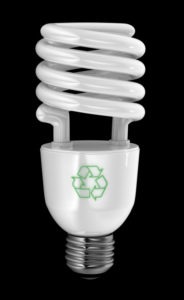 If you’re a small business owner that works from home, your electricity bill may be doing double-duty…covering both your home and business energy needs. Fortunately, there are some simple ways to save energy throughout your home, leaving you with more cash for the bottom line!
If you’re a small business owner that works from home, your electricity bill may be doing double-duty…covering both your home and business energy needs. Fortunately, there are some simple ways to save energy throughout your home, leaving you with more cash for the bottom line!
Here are some simple ways to save energy around the house:
- Caulk and weatherstrip your doors and windows. It keeps cool air in during the summer, and heat in during the winter.
- Add a storm door to all outdoor doors.
- Replace your windows with energy-efficient windows if possible.
- Use heavier window treatments, such as shades and curtains, to help maintain the indoor temperature in your home.
- Make sure all of your appliances are energy-efficient.
- Unplug all appliances, including computers, when they will not be used. This keeps them from drawing power when not in use. (Alternately, plug into a power strip and turn off the strip when not in use.)
- Turn off your computer if you’re not going to use it for more than 2 hours. If your monitor is separate from your computer, turn the monitor off if it will not be used for more than 20 minutes.
- Use of new lighting technologies can reduce lighting energy use in homes by 50%–75%. Upgrading 15 of the inefficient incandescent light bulbs in your home could save you about $50 per year. (source: energysavers.gov)
- Use the lowest watt bulb practical for each space. The lower the wattage, the less energy the bulb uses when lit.
- Turn off your lights whenever you don’t need them, and teach your family to do the same.
- Turn down the heat in your home. By getting your family used to a lower temperature (even 5 degrees) you can save a lot of energy.
- Consider using a space heater, rather than turning up the system in your whole house, if you’ll only be using one room in your house for long periods of time (like a home office.)
- To conserve hot water, fix leaks and install low-flow fixtures.
- An energy-efficient dishwasher can actually save more energy than hand-washing dishes in hot water several times per day, especially when using shorter wash cycles.
- Get an energy-efficient clothes washer and dryer. In your clothing washer, use cold or warm water for washing, and cold water for rinsing.
- Lower the thermostat on your water heater. For each 10ºF reduction in water temperature, you can save between 3%–5% in energy costs. Most households are just fine with a setting of 120ºF on their water heater. Reducing your water temperature to 120ºF also slows mineral buildup and corrosion in your water heater and pipes. This helps your water heater last longer and operate at its maximum efficiency.
By giving some attention to these small details, and teaching your kids to do the same, you can reduce your energy costs and conserve energy. And that means more money in your pocket!
How do you save energy at home? How does your business conserve energy? We would love to read your thoughts and tips in the comments below!
We are thankful to the US Dept of Energy for sharing these valuable tips on their website at http://www.energysavers.gov. For more information on any of the topics above, please visit their website.








![MP900177739[1]](https://dsef.org/wp-content/uploads/2011/09/MP9001777391-300x200.jpg)


 We know how it is. You’re busy. You meant to make that bank deposit yesterday, but there just wasn’t time. Now you’re staring at $56 in small bills and have no idea who gave it to you. You’d deposit the cash anyway, but your bank, which is on the other side of town, is closed on Saturdays.
We know how it is. You’re busy. You meant to make that bank deposit yesterday, but there just wasn’t time. Now you’re staring at $56 in small bills and have no idea who gave it to you. You’d deposit the cash anyway, but your bank, which is on the other side of town, is closed on Saturdays.